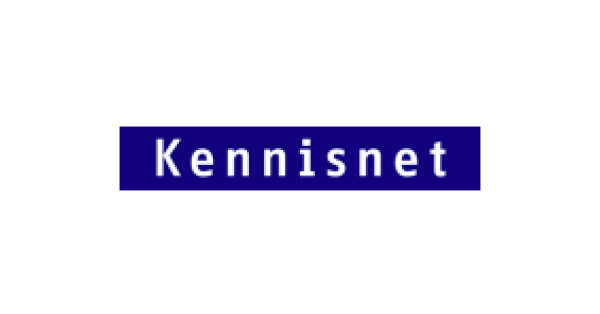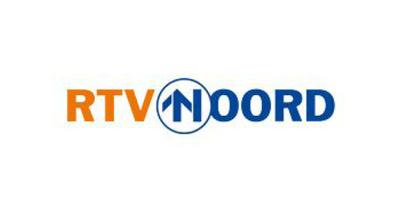Kennisnet keeps its finger on the pulse with Paessler PRTG even outside working hours
About Kennisnet
Every student deserves a contemporary, safe and personal education. That is why Kennisnet supports schools with ICT. The organisation provides a national ICT infrastructure, advises the sector councils and shares knowledge with primary education, secondary education and vocational education and training. Kennisnet is financed by the Ministry of Education, Culture and Science.
It is impossible to imagine education without ICT. Many schools, teachers, students and publishers make daily use of services that are centrally arranged at Kennisnet. These services ensure, among other things, the availability of digital learning resources, the secure exchange of students' data and insight into school performance. It is therefore very important that they are always available.
Tom van der Sluijs, Functional Application Manager at Kennisnet, and his department ensure that the main virtual platform and the servers that run on it work optimally: "The entire education chain depends on our uptime; if our services are not accessible, this has a direct impact on schools, students and publishers."

The facts
- 120 employees
- 1863 active sensors
- 494 devices
Challenges
- Direct intervention when a service or website does not work properly
- Subsequent reporting to product managers
- Autonomously adjusting functional checks
- Easily manage and update new software
Results
- Automatic monitoring of servers, switches, printers, etc.
- Rapid detection of problems on the network
- Easily make adjustments to new and existing checks
- Ability to report what happened afterwards
- API that allows the export of data to other applications, such as a traffic light
“The implementation of the software went very smoothly. Thanks to the auto-discovery feature, we were able to easily and quickly create new sensors for our network, even today.”
Tom van der Sluijs, Functional Application Manager at Kennisnet
Need for checks and reports
Kennisnet manages the ICT itself as much as possible. All software is located in a private cloud and schools connect with that software. Kennisnet must therefore respond as quickly as possible if something does not work.
Tom explains: "We continuously carry out functional checks to find out whether there are any problems on our network. Before we knew of PRTG Network Monitor, we used monitoring software with which we could not create our own checks. We were also unable to print out reports, even though we were in great need of them. We came across PRTG via Google. First we installed the free trial, but soon we decided that the software met our two main goals: to find out as soon as possible whether something was broken and to be able to report back about the events."
Automatic creation of sensors and reports
Kennisnet has been using PRTG since 2012 and has been a satisfied user ever since. Tom says: "The implementation of the software went very smoothly. Thanks to the auto-discovery feature, we were able to easily and quickly create new sensors for our network, even today."
Tom's team has put up a monitor in their own department and at the service desk, where a message is displayed when something is down. Everyone is then immediately aware of the problem. In the past, they first had to inform the service desk of a possible malfunction, but this is no longer necessary. This allows the service desk to respond much more adequately to customer queries that come in.
The reporting function in PRTG also gives Kennisnet more insight and control. "The reports show the speed of a certain check over a specific period in time and when a malfunction has occurred. We can also see if a service has become slower after a certain release. And they are useful for the product managers, who use them to check the uptime of certain services," says Tom.
Green...yellow...red!

With PRTG's API, Tom and his team have created a special monitoring page with traffic lights. But that's not all. They also put a physical traffic light in the department that turns red when there are problems. Tom emphasises the importance of good monitoring: "We need to continuously know whether everything is going well in the network. If we don't use PRTG, it could go unnoticed for an hour that a website or service can be offline. We receive calls from publishers and schools, because they depend on our services. Moreover, we have an exemplary role for the education chain when it comes to the quality of ICT, so everything must continue to work well for us.
Kennisnet also keeps its finger on the pulse with PRTG outside regular working hours. Uptime is particularly important between 7:00 and 23:00. Tom's team has set up a script that PRTG reads. If a service does not work properly within this period, PRTG sends a notification to the team members via the Telegram app. They can then see very quickly what is going on on on the network and fix the problem.
Conclusion
Tom concludes: "We strive for as little manual work as possible and only want to do things once. With PRTG we can quickly detect a problem on the network, solve it and prevent it from happening again. PRTG works for us and we don't want to change something that works well."
Get to know more happy PRTG customers
Customer success story RTV Noord & PRTG
With PRTG, RTV Noord keeps a close eye on the network load and also uses the data to justify new investments. ➤ Read the complete customer success story now!
Customer success story School District of Pickens County & PRTG
During the pandemic, PRTG helped keep the IT staff, students, and teachers on the same page even if they had to work remotely. ➤ Read the complete customer success story now!
Customer success story Smooth Fusion & PRTG
PRTG makes life much easier for sysadmins at Smooth Fusion with its early warning system to prevent IT emergencies. ➤ Read the complete customer success story now!




